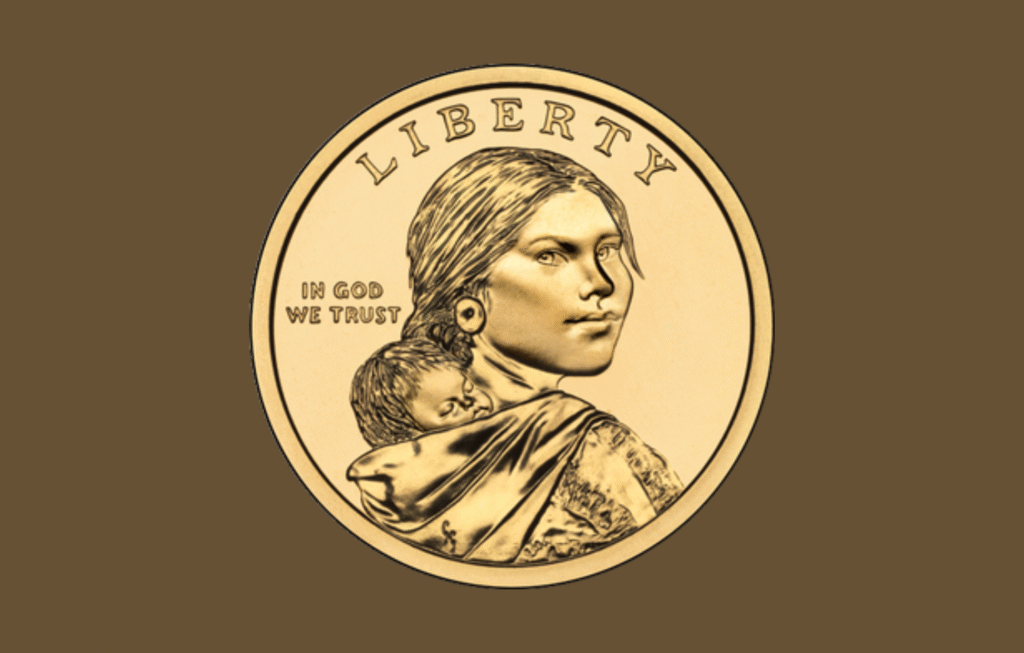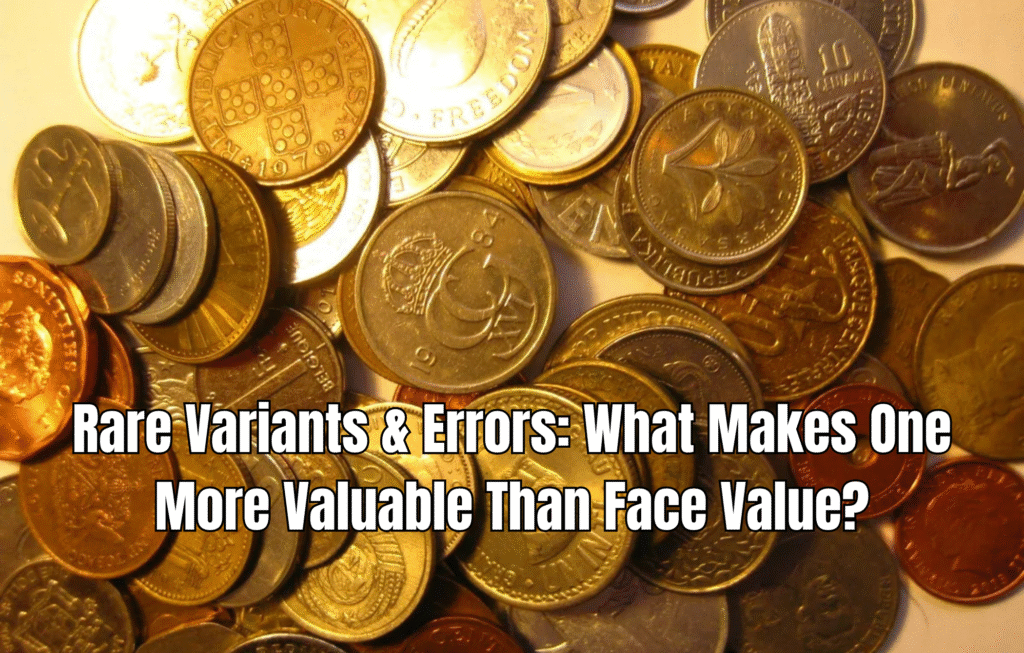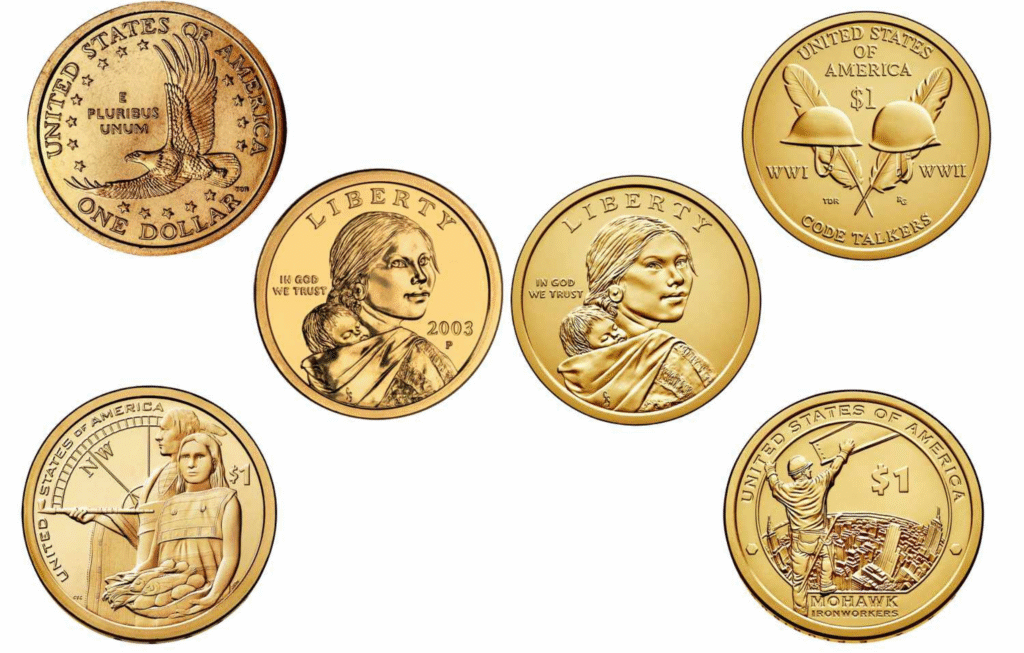The Basics: What Are These Two Currencies?
The $2 Bill: Legacy, Design, and Current Use
The United States $2 bill is a Federal Reserve Note that has been issued in various forms since 1862. The modern small‑size $2 bill (the same physical dimensions and materials as other modern U.S. notes) dates from 1976, when it was reintroduced after a decade’s hiatus.
On the front (obverse), it features Thomas Jefferson. On the back (reverse) is a reproduction of John Trumbull’s painting The Declaration of Independence. The $2 bill is still legally valid and in production; however, it circulates very little compared to other denominations.
Because of its low usage, many people assume it has been discontinued or is rare. That’s not true — but its scarcity in daily commerce gives it something of a novelty status.
Collectors sometimes value certain $2 bills beyond face value, especially if they are older series, star notes (replacement notes), have fancy serial numbers (like repeating digits or palindromes), or are very crisp from printing. But most $2 bills in typical condition are worth exactly $2.
The Sacagawea Dollar: The “Golden” Dollar Coin

The Sacagawea dollar is a one‑dollar coin first minted in 2000 by the U.S. Mint. Its obverse shows Sacagawea (the Shoshone woman who escorted Lewis & Clark) carrying her infant son Jean Baptiste. The original reverse was a soaring eagle; in later years, under the Native American $1 Coin Act, the reverse design changes annually to highlight Native American contributions.
The coin is made of a copper core clad with a manganese‑brass alloy, giving it a golden hue (though it contains no actual gold). Its edge was plain initially (2000–2008), later becoming lettered (2009 onward) with mint information and inscriptions on the edge instead of the face.
Though the Sacagawea dollar was intended to be used more in everyday transactions (to reduce costs of handling paper dollars), it never gained strong traction. After 2011, most minting has been targeted for collectors rather than general circulation. In 2025, Sacagawea / Native American dollars are still legal tender, and occasionally they do show up in change, coin rolls, or vending machines.
In normal condition, a Sacagawea dollar is worth $1. But, as with most forms of currency, rare varieties or mint errors can drive much higher collector values.
Circulation vs Rarity: Why They Feel “Uncommon”
One reason these two forms stand out is that neither circulates widely in everyday transactions — for different reasons.
With the $2 bill, many people are unfamiliar with them, and banks or merchants sometimes hesitate to accept them, thinking they might be counterfeit or obsolete. Because of this low usage, fewer are out in common hands, even though production continues.
With Sacagawea dollars, the decline in production for circulation and the public’s preference for paper dollars means many coins go straight to collectors, bank vaults, or coin machines rather than everyday change. Thus, the “rarity” is often more of appearance than true scarcity.
As some coin hobbyists remark:
“These things are like two‑dollar bills in that they exist … but you rarely see them in circulation.”
“Not rare, just a 25‑year‑old dollar coin … you have the right mint, you have the right year, but you do not have the wounded eagle.”
So, typically, encountering one in your wallet is more novelty than jackpot. But in the world of numismatics, “rare” doesn’t necessarily mean “nonexistent” — certain mistakes or limited issues command enormous values.
Rare Variants & Errors: What Makes One More Valuable Than Face Value?

Rare $2 Bill Varieties
Most $2 bills are just worth face value. But a few conditions can elevate their worth, especially to collectors:
- Older series: Some bills printed decades ago, especially pre‑1976 or early versions, are more sought after.
- Star notes / replacement notes: These have a star (*) in the serial number and are printed to replace flawed notes — they are scarcer.
- Special serial numbers: Serial numbers like 00000001, 12345678, repeating digits, palindromes, or patterns can attract premium.
- Pristine condition: Bills in uncirculated, crisp, flawless condition often have higher value to collectors than well‑worn examples.
That said, even many older or neat $2 bills sell only modest premiums unless they hit a combination of rarity, condition, and demand.
Rare Sacagawea Dollar Varieties & Errors

Here is where the potential for really big value lies — some Sacagawea dollars with unusual production flaws or special editions have fetched sums far above $1:
- Cheerios Dollar (2000‑P “Cheerios” edition): In 2000, General Mills included about 5,500 Sacagawea dollars in certain cereal boxes as a promotion. These coins have heightened detail on the tail feathers and are a known collectible variant. Values for these vary depending on condition, but they can command hundreds to thousands of dollars.
- Wounded Eagle / Speared Eagle error: Some coins have a die gouge or scratch through the eagle’s body on the reverse, giving it a “wounded” look. These errors are relatively scarce and collectible.
- Mule error (Washington Quarter / Sacagawea dollar mix): This is arguably the most famous modern U.S. coin error. A few Sacagawea dollars were mistakenly struck using a Washington quarter obverse (front) die, producing hybrid “mule” coins. In October 2025, one such coin reportedly sold for $2.1 million at a private auction. Some sources even say up to $2.3 million in particular cases.
- High‑grade, flawless specimens: Even a standard Sacagawea dollar, if held in perfect mint (uncirculated) condition, might fetch more than $1 — though generally not astronomical unless it’s one of the rarer varieties above.
Because these error coins are extremely scarce (only a handful are authenticated), the demand among high-end collectors pushes their prices to astronomical levels.
Which One “Could Be in Your Wallet” — and Could Be Valuable?
If you pull cash or coins from your wallet or a drawer, which is likelier to yield an unexpectedly valuable piece?
- You’re more likely to find a $2 bill in circulation (though rare) than to stumble across a mule Sacagawea error.
- However, the potential upside of a rare Sacagawea error is far greater. A standard $2 bill might fetch a modest premium if it’s an old series or special serial number. But a mule Sacagawea coin sells in the millions.
- Most Sacagawea dollars you find will be worth only $1. Some varieties (Cheerios, wounded eagle) might bring a few hundred dollars or more if in good condition and authenticated.
Suppose you have a Sacagawea coin showing anything unusual (misaligned strike, different metal, mismatched designs) — that’s a red flag (in a good way). Similarly, an old or crisp $2 bill with a serial pattern is worth examining.
In short: both have the potential for collectible interest, but the Sacagawea error coins are where the real “holy grail” lies.
How to Check What You Have (Steps & Tips)
- Examine the date and mint mark
- For the Sacagawea dollar, look especially for 2000‑P or anomalies.
- For the $2 bill, note the series year (1976, 1995, 2003, 2017, etc.) and mint location (F, G, etc.)
- Look for obvious errors or mismatches
- On a Sacagawea coin, see if the obverse or reverse looks mismatched, or if it seems struck on the wrong metallic planchet. A mule error will show unusual design on one side.
- On a $2 bill, check for a star at the end of the serial (star note), fancy or repeat serial numbers, or uncirculated condition.
- Assess condition
- Coins or bills with no wear, strong luster, sharp strike, no damage are more valuable.
- Avoid coins that were cleaned, scratched, or heavily worn — they often lose significant premium.
- Consult a professional
- If you suspect you have a rare variety or error, send it to a certified coin grading service (like PCGS, NGC) for authentication.
- A local trustworthy coin dealer or numismatic society can also help.
- Check auction records / price guides
- Compare your piece against known auctioned specimens. For example, the 2000 mule Sacagawea that sold for $2.1 million sets a benchmark.
- Use coin catalogs or online databases to check relative scarcity and reported values.
Recent Highlights & Market Trends (2025 Update)
- In 2025, coin watchers continue to buzz about the mule Sacagawea error. One coin reportedly fetched $2.1 million at a private sale. Another source mentions a $2.3 million valuation for a mule found in circulation.
- Some articles even highlight speculative valuations as high as $8.1 million, though such numbers should be viewed with caution as sensational reporting.
- Meanwhile, commonplace Sacagawea dollars (especially post‑2011 issues) still trade at face value for the vast majority.
- For $2 bills, interest remains modest. A perfectly preserved 1976 or early series specimen might carry a small premium, but none have approached the wild valuations seen in coin error rarities.
The numismatic market continues to treat Sacagawea errors as trophies, whereas $2 bills stay more in the realm of novelty and modest collectibility.
Bottom Line: Which Is the More “Valuable” in a Wallet?
If forced to pick, the Sacagawea dollar (specifically a rare error variety) has a far higher ceiling for value. A mule error Sacagawea has sold in the millions. The $2 bill, while interesting and occasionally collectible, typically doesn’t reach those speculative heights.
That said, most everyday $2 bills or Sacagawea coins are only worth face value. The trick is recognizing anomalies — unusual serials, star notes, mint mistakes — and getting them authenticated if they look promising.
FAQs
1. Are $2 bills still being printed in 2025?
Yes, the $2 bill is still legally issued and printed, though it circulates infrequently. Most people rarely see them in everyday transactions but they remain valid currency.
2. Is the $2 bill considered rare or discontinued?
No. It’s still in production and legal tender, but limited circulation and public unfamiliarity make it feel rare. Most are worth exactly $2 unless collectible features exist.
3. Who is featured on the $2 bill and Sacagawea dollar?
The $2 bill shows Thomas Jefferson on the front; Sacagawea dollar features Sacagawea carrying her child. Both designs celebrate key historical American figures.
